Friends, a few days ago, I drove the road of Tang poetry in eastern Zhejiang , and I have listed it as the best self-driving route around Hangzhou in my heart, no one!
It is the rainy season in the south of the Yangtze River, and it is the most suitable way to take this road, so I will quickly upload the self-driving repo to everyone.

The cultural IP popularity of Tang Poetry Road has always been quite high. When the Hangzhou-Taiwan high-speed rail opened at the beginning of the year, many people set up a flag saying that they would play it one stop at a time. I wonder if the previous promise has been fulfilled?
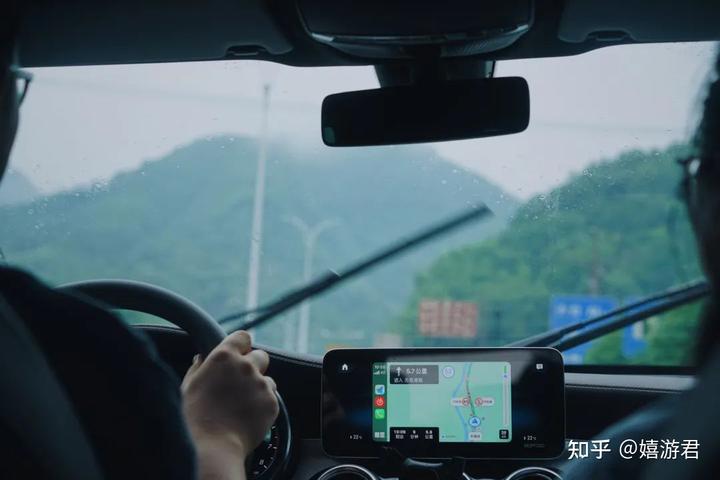
I did not take the high-speed rail this time, and chose to drive by myself.
Calculate the distance before departure. It only takes 2-3 hours to drive directly from Hangzhou to Tiantai (or Linhai), which is not a big problem.
The advantages of self-driving are also obvious. Basically, you can connect the essential scenic spots along the road without taking a detour, and you can drive and stop when you see the exciting scenery.
From the point of view of playability, the Tang Poetry Road is not a cultural hard trip. It is a route with diverse scenery and concentrated food and snacks .


Starting from Hangzhou , passing through Shaoxing, Shengzhou, Xinchang and Tiantai , it connects the four major food highlands under Zhejiang. Shaoxing cuisine “drunk and musty”, Shengzhou’s tofu buns, Xinchang’s baked soup buns, taro dumplings, rooftop wheat cakes and dumplings…
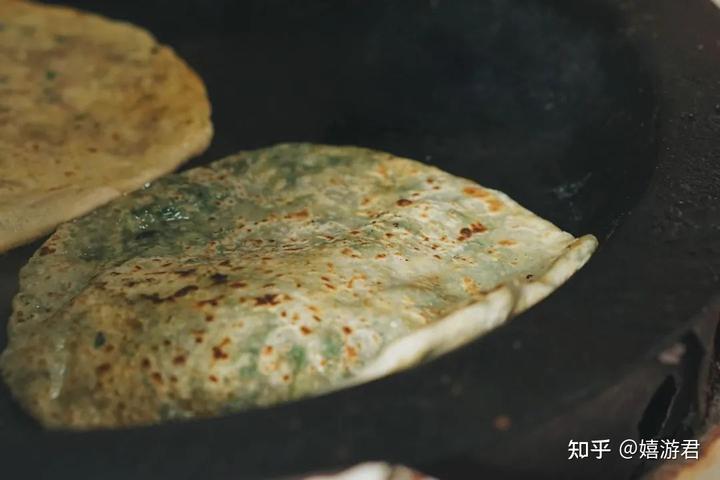

We can change the taste of the county every meal, and there is no possibility of getting bored. Basically, we eat and drink all the way through the name of cultural IP.


Now is the rainy season. It used to be the time I hate the most. The rain is wet and rainy. But after this journey, I fell in love with the rainy days in Jiangnan again.
The poetic landscape must be seen in the misty rain to be more beautiful.

route planning
Let’s do the route planning first: Where is the road of Tang poetry?
In fact, although it is called the Road of Tang Poetry, it does not have a very clear avenue or waterway. It is more like a cultural concept, a poetic road book connected by many Tang poems.
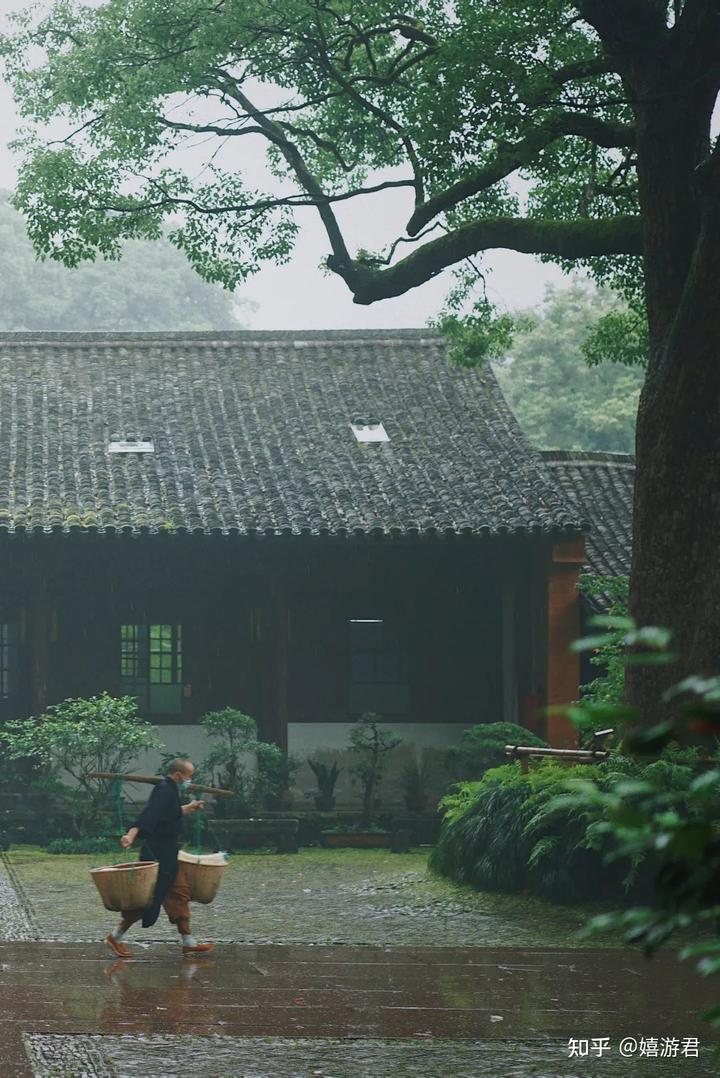
In the early 1990s, Zhu Yuebing, a scholar in eastern Zhejiang, first discovered this hidden poetic path from “The Complete Tang Poems”. It turns out that more than 400 poets (nearly 1/5 of the total) of the more than 2,200 authors have come here to check in and write poems!

According to textual research, most of the poets in the Tang Dynasty had to take a boat to the south of the Yangtze River. The route is generally from Yangzhou in Huaidian to cross the Qiantang River south through the canal, from Xixing to the East Zhejiang Canal , and then to the Cao’e River in Shangyu, and then upstream along the Yanxi River . Go up, climb Tiantai Mountain , and finally arrive at Shiliang Waterfall , with a total length of nearly 200 kilometers. This is the approximate route.

From the perspective of modern geographical coordinates, the road to re-travel Tang poetry is a line like ” Xiaoshan-Shaoxing-Shangyu-Shengzhou-Xinchang-Tiantai-Linhai “.


For humanities lovers, there are many things to see along the way.
This is a road that combines history (from Eastern Jin to Tang and Song Dynasties), geography (from north to south along the Cao’e River), nature (lakes, mountains, streams and waterfalls), humanities (story of the nobles, footsteps of poets, scenery in the south of the Yangtze River), historical sites (Buddha statues, Ancient buildings, Buddhist pagodas, ancient cities), religions (Big Buddha Temple, Guoqing Temple)…all slash lines connected in series.


Before leaving, I marked the points I wanted to go to on the road. Basically, I can easily combine different gameplays for 2-4 days without going back.
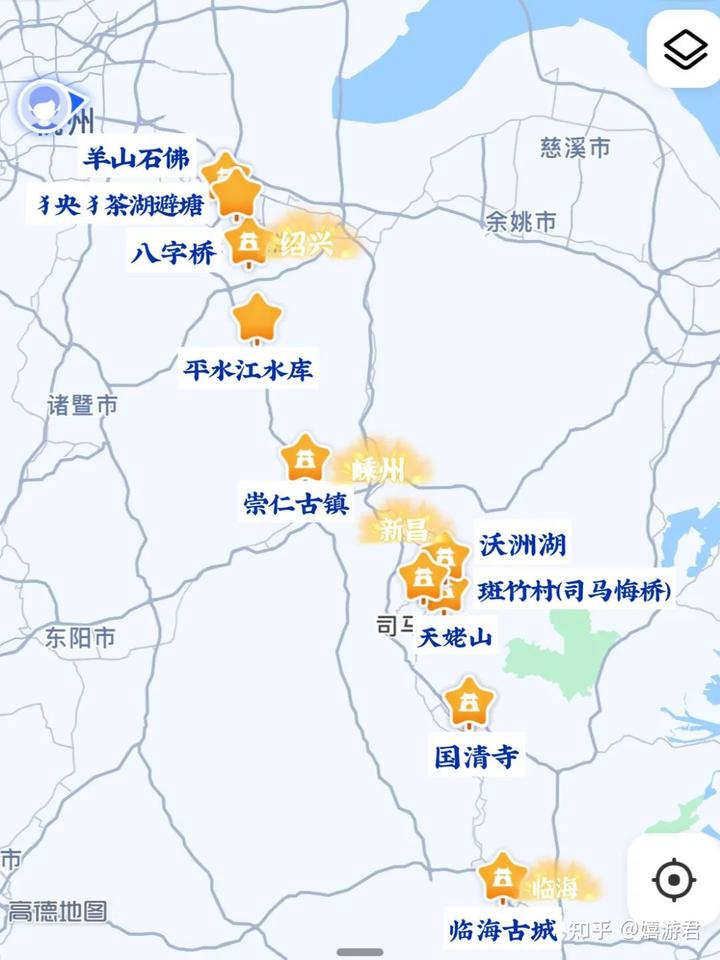
My wiring arrangement:
DAY1 : Hangzhou-Shaoxing (Yangshan Stone Buddha/Yangyang Tea Lake Shelter//Bazi Bridge)-Shaoxing Lunch-Pingshuijiang Reservoir-Chongren Ancient Town-Shengzhou Dinner, live in Shengzhou;
DAY2 : Shengzhou-Xinchang Banzhu Village-Tiantai County Lunch-Guoqing Temple, return to Hangzhou.
I didn’t go to Linhai this time, and only had a 2-day itinerary, but I already had a good time.
DAY1 Shaoxing→Shengzhou
Shaoxing is the only place to go on the road of Tang poetry. It is impossible for me to pick Shaoxing from my itinerary if I go back to the road of Tang poetry. Who makes the old streets here easy to browse, and the “drunk, moldy, pickled and smelly” Shaoxing dishes are delicious.
I recommend two niche spots in Shaoxing to everyone. I think they are more popular than Keyan Scenic Spot. A good-looking place is really not famous.
Yangshan Stone Buddha

The Yangshan Stone Buddha Temple in Shaoxing is worth a visit. Because the site selection idea is peculiar, the Buddha statues are also interesting.
According to historical records, during the reign of Emperor Kaihuang of the Sui Dynasty (581-600 AD), Yang Su, the Duke of Yue, organized migrant workers to mine the stones of Yangshan to build the city, leaving behind the solitary rock standing on the wall of Lintan.
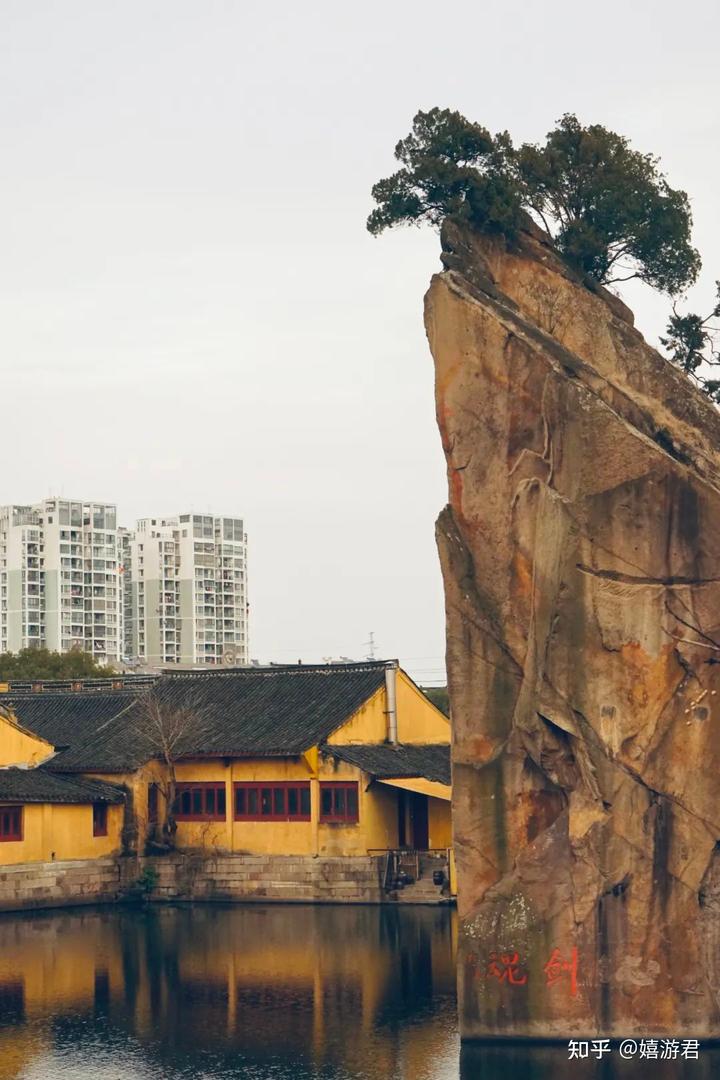

Later generations dug a grotto on the top of the solitary rock, and carved a stone Buddha in the grotto using natural rocks.
So you will think its site selection is very wonderful, as the predecessors summed up, “the Buddha is in the stone, the stone is in the water, and the water is in the mountain”.
Anyway, I have never seen a similar temple.

I like the fingers of this Maitreya statue the most. The five fingers are slender and round, and the lines are extremely beautiful, which is shocking. In the South, such statues are extremely rare.

From the perspective of the Buddha statue, you can see the city of Shaoxing, with low old houses in the vicinity and high buildings in the distance.
Qianyang tea (ang sang) lake shelter
The Zhedong Canal runs through the whole of Shaoxing from east to west, leaving a winding ancient fiber road for Shaoxing. It used to be a passage for the backs of ancient people’s boats, and it was also a barrier for passing ships to avoid the wind and waves.

With the development of the city, most of them disappeared, leaving only a few fragments, which are all out-of-print landscapes.
I discovered the low-key ang sang lake shelter from the news of a photographer friend.
It still looks wild, and the road is paved with irregular large stone strips, and you can follow it all the way to the center of the lake.

The ancient scenery made us all feel very excited, and the photos were also very good.
If you watch the sunset in the evening, it should also be very good.
Bazi Bridge
If we want to talk about life in the water villages in the south of the Yangtze River, we cannot do without bridges. There are many ancient bridges in Shaoxing, a water town, and naturally there are many relics.
The Baziqiao I went to did not have too much commercial development, and still retained the most authentic life.


Upeng boats come and go, and the locals sit on the street drinking tea and chatting to pass the day. A leisurely and comfortable living state seems to be a talent engraved in the bones of Shaoxing people.


On the edge of the Eight-character Bridge, there is also a wilderness bookstore worth visiting.
Downstairs, I saw the posters of their previous folk activities. The guests invited were Zhou Yunpeng, Zhao Peng, Zhong Lifeng, etc. They were all folk singers I liked very much, and I got a wave of goodwill.

I went up the stairs to the second floor, pushed open the glass door, and entered my ideal study room unexpectedly!
The large bookshelves stretched from the ground to the ceiling, and the shelves were full of books. No bells and whistles, the book is the point. Books are mostly humanities and arts, but there are no strict rules for placement, so looking for books is a bit of a treasure hunt.
I stayed for a while and found a lot of amazing reads.
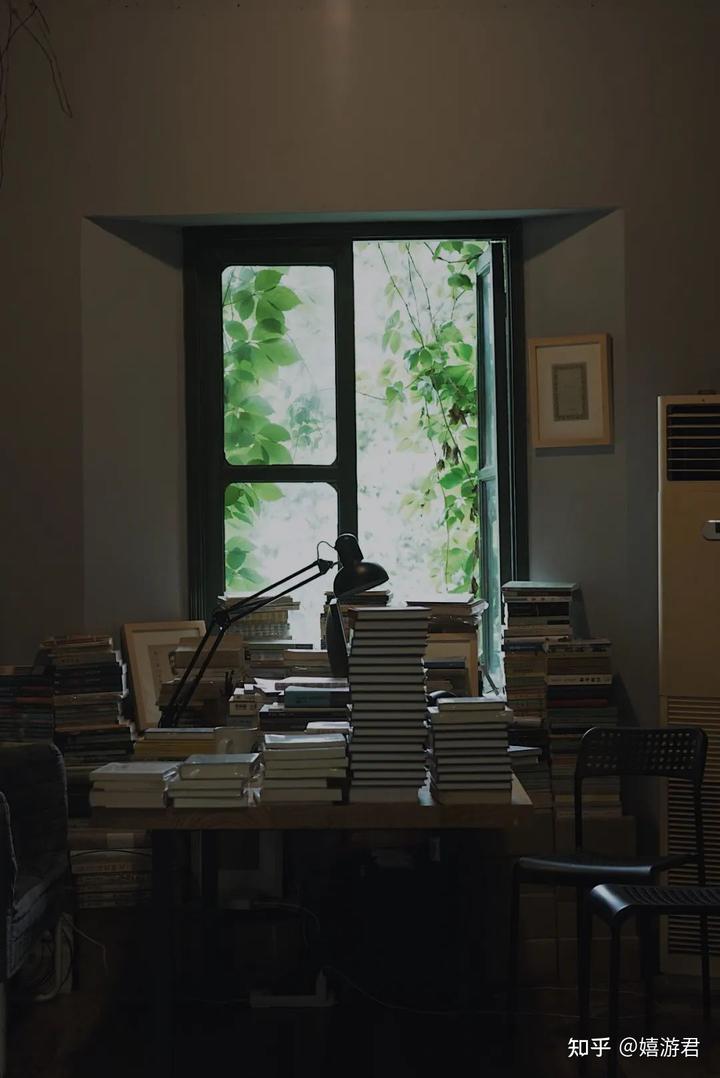
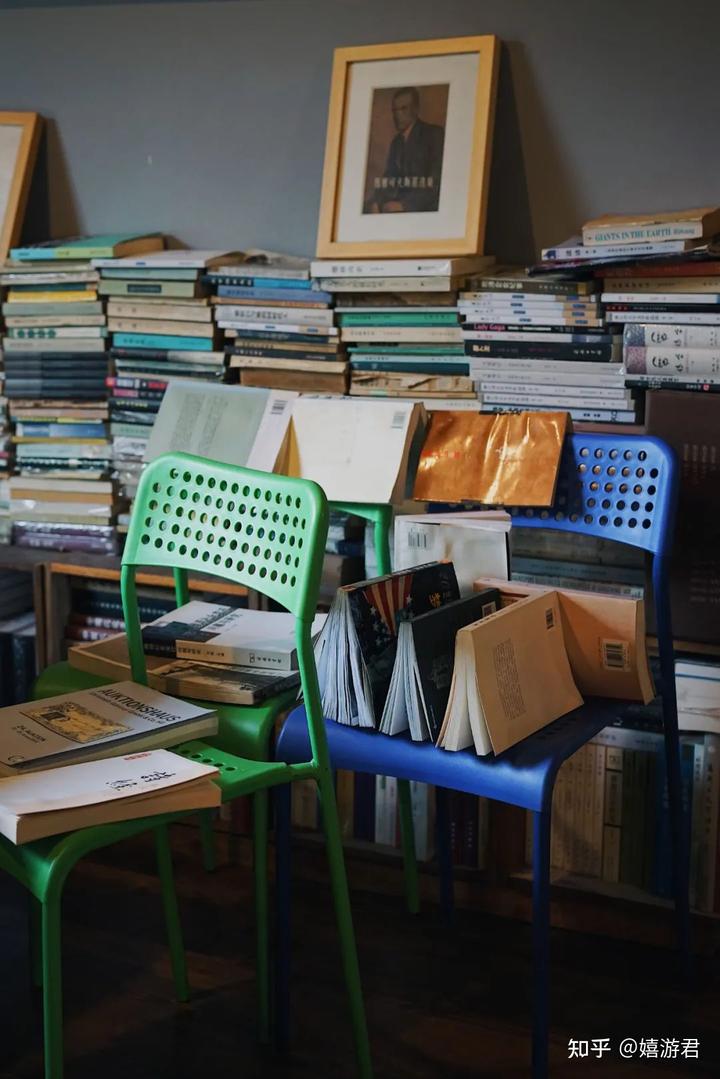
The only thing to complain in a low voice is its service. The staff is a bit tough, and you have to pay the bill when you enter the space, and some questions are always ignored, which makes people a little disappointed.


Shaoxing is also a place where the editorial department has played deeply, and we have also systematically summarized various old streets.
Leilei has written about the five old streets of Shaoxing before: the hometown of Shusheng, Xixiao Road, Cangqiao Straight Street, Fushan Heng Street, and Baziqiao Straight Street.
I think everyone can choose the one they are most interested in, and it is still very convenient to drive by yourself.
Shaoxing Raiders : These 5 old streets in Shaoxing seem to have robbed the most beautiful scenery in Jiangnan
River Quay Hotel
Address: Building 23, Xiangjiaqiao
Business hours: 11:00-14:00, 17:00-21:00

The first meal can be eaten at the Shaoxing River Quay Restaurant , the small fly restaurant, but it is very authentic.
The “drunk, moldy, pickled, and smelly” of Shaoxing cuisine can all be eaten here. Most of the people who come to the restaurant to eat are nearby residents.


Mouth Qianzhang has a distinct personality, and as usual, people who are unacceptable are afraid to avoid it, and lovers relish its unique “mould” smell, and the aftertaste has a gentle fragrance.

The three-piece sauce, steamed taro, stinky tofu, and stir-fried seasonal vegetables are all very authentic Shaoxing practices, all of which are empty.
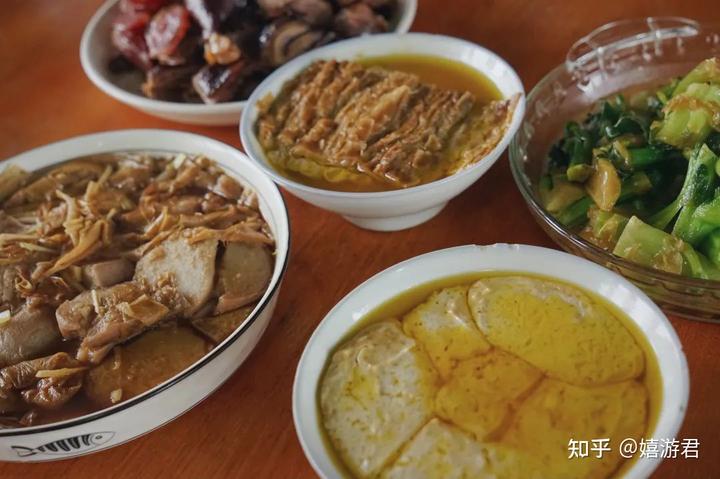
Other Shaoxing restaurants: Ding Laixing Restaurant, Koufu Restaurant, Dingwang Restaurant, Old Street Restaurant
Pingshuijiang Reservoir
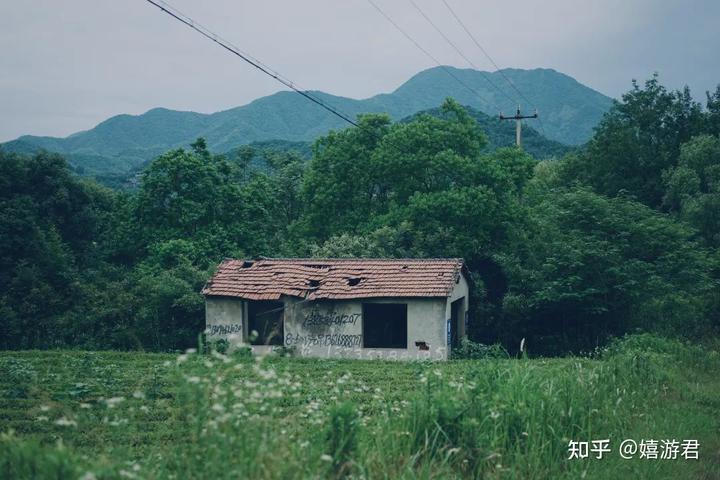
Departing from Shaoxing to Shengzhou, you will pass the Pingshuijiang Reservoir. It is not a serious scenic spot, but you can take a look.
Its location is exactly Ruoye Stream, a very gimmicky stream.

Legend has it that Xi Shi once washed yarn and picked lotus by this stream, and the famous swordsmith Ou Yezi once took the copper of Ruoye River to forge a sword.
Poets in the Tang Dynasty also liked to write about it. Li Bai wrote a refreshing song called “Lotus Picking Song”: “If you pick a lotus girl by the side of the river, laughing and sharing the human language across the lotus flower. The sun shines with new makeup and the bottom is bright, and the wind is fragrant and the robe is lifted in the air.” It was written about the beauty here.


Today, the Pingshuijiang Reservoir is the largest water storage project on the Xiaoshao Plain. The construction of the reservoir has caused the upstream water level to rise and inundate many surrounding mountains, so the mountain scenery here is wavy, and it hits Qiandao Lake a bit.

Because it is an important water source, it is not suitable for picnic camping, but it is quite suitable for aerial photography. I sent a small plane to the sky to take a look, and accidentally found a bird island hidden in the lake.
The isolated island has quietly turned into a happy paradise for birds.
Chongren Ancient Town
The overcrowded ancient towns in the south of the Yangtze River can easily make people feel conflicted. But Chongren Ancient Town is still very original. The locals live in old houses and live a small life slowly, which gave me a lot of surprises.

The ancestors of Chongren Ancient Town were once prosperous. In the 1930s, there were no less than a dozen silk factories, tea factories and cloth factories with assets of more than 100,000 yuan, which were also called “Little Shanghai in East Zhejiang”.
Although now it seems that it is very suspected of being a hot spot.


The prosperity has come to an end, but after a walk in the ancient town, you can feel the glory of the past.
With the Yushan Temple as the center, there are more than 100 well-preserved old gates. Connecting the gate is a narrow cross-street building, which can be said to be an ancient overpass.
There are also gray walls and black tiles on temples and ancestral halls, as well as complicated wood carvings and brick carvings, all of which are symbols of wealth and strength.


It is said that the people here also have a hidden skill, that is, whether old or young, they can write good calligraphy.
After inquiring carefully, I learned that in April and May every year, Shengzhou will hold an annual calligraphy festival. Who called Wang Xizhi’s calligraphy famous in Shaoxing!

From Chongren Ancient Town, take National Highway 804 to Shengzhou, which is a section of winding mountain road. The car climbed to the top of the mountain, but unexpectedly found a viewing platform, overlooking the entire Shengzhou County.
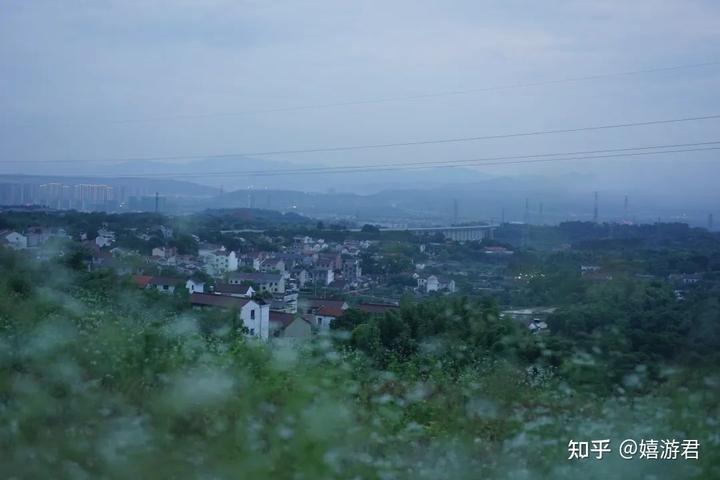
The distant mountains that had rained were shrouded in mist, clean and clear. The nearby villagers had already eaten dinner, and they were standing on the viewing platform chatting and digesting food. Such a quiet atmosphere reminds me of many calm and distant Japanese movies.


Taking advantage of the twilight, we entered the territory of Shengzhou, and we were already hungry.
I’ve been to Shengzhou before, and this time I’m a little familiar, so I went straight to Yuexiu Road, a late-night snack spot for Shengzhou people.

The food concentration on Yuexiu Road is very high. The neon signs on a street are flashing, and the densely written Huang Ze tofu buns, grilled rice cakes, chicken soup, mutton bone soup … These are the authentic delicacies that make your mouth water when you think of them. .
Big Sister Huang Ze Tofu Steamed Bun (Yuexiu Road Road)
Address: No. 98, Yuexiu Road
Business hours: 06:00-14:00, 16:30-02:00

There are many snack bars in Shengzhou, Hangzhou, but the authentic and delicious Shengzhou Xiao Long Bao, I have only eaten in Shengzhou.
Shengzhou xiaolongbao is divided into two types: tofu buns and meat buns.

Fat elder sister Huang Ze tofu buns sell fast, basically only enough to sell now.
We bought tofu buns with a thin layer of skin that broke when touched with chopsticks, and when biting open, there was a soft and tender bean curd filling inside. The locals use Changle old lactone tofu, which is extraordinarily soft and tender. Lifting one up and taking a bite, it almost “slipped” into his mouth.

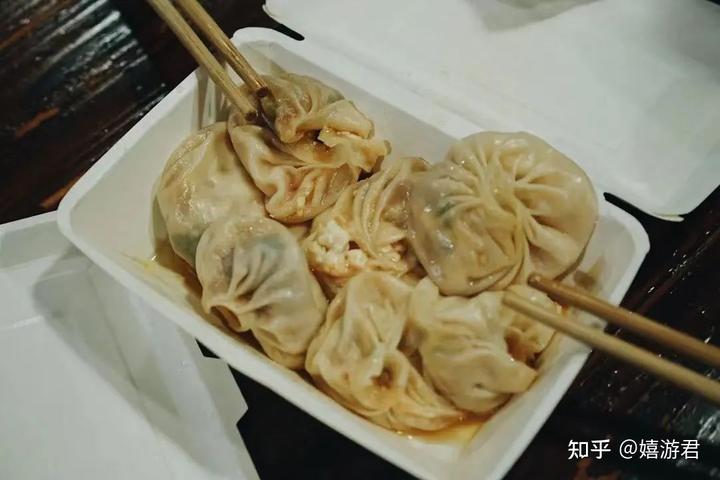
Pan-fried old horse
Address: No. 83, Yuexiu Road
Business hours: 15:00-03:00
In the next game, the old horse across the road will be fried.
Lao Ma Shengjian also has a good reputation among the locals. This is the main battlefield for dinner. We ordered tofu fried buns, grilled rice cakes, chicken soup, mutton bone soup, and a fried snail. Try it again and again.

The method of baking rice cakes is very similar to that of pan-fried buns. It must be fried in a special pan first, which will make the dough pliable and translucent, and at the same time, a golden layer of charred and crispy will be formed on the bottom.
Pour in the egg liquid before the pot is out, and use the residual temperature in the pot to fry the eggs without getting too old. This kind of Internet celebrity eating method was originally popular in Shengzhou.

The bottom of the pan fried is crispy, the filling is delicious, and the soup is overflowing when you bite into it.

Chicken gravy soup is simply a bowl of chowder.
The soup base is naturally chicken soup. The ingredients used are pressed noodles, rice cakes, tofu and shredded lettuce. Add cornstarch and cook until it thickens properly.
You can drink the rich oily aroma in the entrance, and there are chopped chunks of chicken gizzard hidden under it. The taste is crisp and not fishy.

Even the random fried snails are also good, almost discs, very satisfying.

Detailed strategy for shopping and eating in Shengzhou: It has been a stand-in for “Hangzhou Xiaolong” for more than ten years, and it is the most representative of Zhejiang cuisine!
DAY2 Xinchang→Rooftop→Hangzhou
Banzhu Village
The next day, we went from Shengzhou to Banzhu Village at the foot of Tianmu Mountain in Xinchang.
A reasonable guess is that due to the impact of the epidemic, there are too few tourists, and the income is not enough to hire someone to guard, so the entrance of Banzhu Village is unguarded and you can come in directly.
There are very few people in the village, but it can satisfy your imagination of a small village in the south of the Yangtze River.


In front of the village is a gurgling stream, and behind the village there are green hills, and the eyes are full of green. It was a rainy day when I came, and I felt that the green and verdant surroundings were dripping down, and everyone relaxed.

Banzhu Village is an important station on the road of Tang poetry. The old ancient post road passed through Banzhu Village, and the village became a place for pedestrians to rest in the evening.

Xie Lingyun of the Southern Dynasty, Xu Xiake of the Ming Dynasty, Yuan Mei of the Qing Dynasty, Yu Dafu of the Republic of China… Many cultural experts who like to explore in the past dynasties have come here, and it is an ancient Internet celebrity check-in place.
China’s first pair of hiking shoes, “Xie Gongcang”, was developed here.

There is also a Sima Hui Bridge in the village, which is so beautiful that it is eye-catching. It’s not a scam, the moving picture is what I saw in the video before I came here, and the bottom is what I actually took


There is no difference at all!
This ancient bridge, surrounded by green plants, also has a famous story of regret.
Tang Xuanzong twice recruited Sima Chengzhen, the elder of the three dynasties, to serve as an official. When he passed the bridge on his way out of hiding, he felt remorse and dismounted on the bridge, so it is also known as Looma Bridge.



I think maybe the scenery here is too charming, which finally made him absolutely give up working hard in the workplace and enjoy the comfort of a secluded life.
In the early morning after the rain, a layer of milky mist appeared on the river, which brought the atmosphere of The Wizard of Oz to full marks.

Xinchang Buddha
Before leaving, I learned that the main hall of the Xinchang Buddha was under maintenance, so we didn’t go this time. But if you wait until October when it reopens, it’s definitely worth adding points in the line. The Great Buddha Temple is known as the “Dunhuang of the Yue Kingdom”, and it is also one of the ancestral courts of Tiantai Sect and Lu Sect.
The stone Maitreya statue in the temple is the only great relic of the early grotto art in my country in Jiangnan, and is known as “the largest Buddha in the south of the Yangtze River”.

There are also thousands of Buddha statues in the Great Buddha Temple. There are more than a thousand small Buddhas in the cave. The visual effect is very shocking. It is also a rare grotto statue in the south.

We did not stop for dinner in Xinchang this time, and went directly to Tiantai Mountain. If you have more time, I recommend to everyone: Xinchang special grilled soup dumplings, Chaoyang Breakfast Restaurant’s special steamed soup dumplings, and slip down .
Xinchang and Shengzhou are close to each other, and the types of food are similar. For detailed shopping, you can see this guide
Snacks are denser than Shengzhou, this small county in Shaoxing is really amazing!

It was noon when we reached the rooftop, and the direction of foraging became a variety of Taizhou snacks.
Although Tiantai belongs to Yuedi, it is an uncompromising immigrant city. The changes in clothing and clothing to Nandu and Jingkang, as well as the two great immigrants from the north, have created Tiantai’s eating style that is different from other areas in Zhejiang.
Wheat cakes, dumpling tubes, glutinous rice cakes … are all variations of wheat products.
Tiantai Mountain Snacks
Address: No. 117, Workers East Road, Chicheng Street, Tiantai County
Business hours: 10:00-23:00
If you only eat in one restaurant, you can consider Tiantaishan snacks. This is a famous old shop in Tiantai, which can sweep all the more representative snacks.
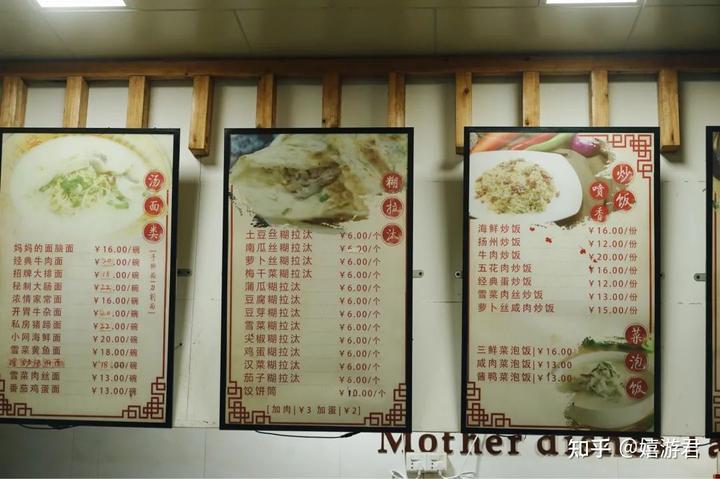
When I entered the store, I saw my aunt was wrapping the dumpling tube without any fuss. The fillings were all in one glance: shredded tofu, shredded carrots, vermicelli, egg skin, black fungus, pork, celery… a cake stuffed inside There are more than ten kinds of fillings, so many are overflowing.
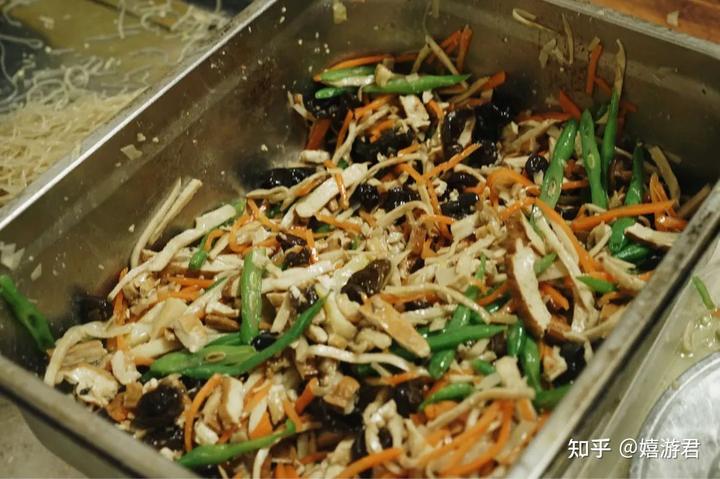

The thin and tough pie crust is rolled into a huge “spring roll”, which is then fried on the pan until the outer skin is golden brown and shiny.

Dumpling tube, must come. The characteristics of wheat cakes, fried rice cakes, tofu paste, and sweet wine must also keep up.
The dumpling tube is the most luxurious. It is so bulging that one bites down. All kinds of fillings have their own magical powers, and the aroma is overflowing.

The paste Latai thought it was a bowl of paste, but it turned out to be a cake, a bit like a pancake with fillings. Be sure to eat it while it’s still hot, when the skin is crispy and the filling is still juicy, recommended.

There are also many sweet soups to choose from in the store. There are sweet little sugar waters such as longan soup and sweet wine to assist, and this meal is more complete.

Workers East Road Wheat Cake Shop
Address: No. 145 Workers East Road

Workers East Road wheat cake shop has been open for more than ten years. I think the boss has a lot of say in how to make wheat cakes delicious.
I don’t know what magic the boss has put into the wheat cake crust. A small piece of dough can be wrapped in a large spoonful of filling, and it can be rolled into a thin one.



The oatmeal must be eaten freshly made, and it is still steaming when you get it.
It doesn’t taste hard and crispy. The outer layer is fried with a crispy fragrance, but the inner layer is soft and tender when you bite into it. It is gentle and ironing, and it will be thinner and moister than ordinary biscuits.
I like the taste of mustard greens, which looks green and gleaming, and tastes fresh and tender that is unique to wild vegetables.


Guoqing Temple
Tiantai Guoqing Temple is the last stop, but it is definitely the finale attraction of this trip.

I can say without exaggeration that it is the most beautiful temple I have ever visited in the south! Only the misty and rainy Guoqing Temple can make me forgive the rainy day in the south.

The scenic spot has been free of tickets since 2017. It is a 5A-level scenic spot that can be visited free of charge.
Entering from the entrance of the scenic spot, on the road to Guoqing Temple, there are large tracts of rice fields, which are still not open for business. When the rice turns yellow in autumn, it must be another scene.

From the perspective of historical positioning, Guoqing Temple is not only the common ancestral home of Tiantai sects in China, Japan and South Korea, but also known as the “Four Wonders of Chinese Temples” together with Jinan Lingyan Temple, Nanjing Qixia Temple and Dangyang Yuquan Temple.
There have been many eminent monks stationed here, including Tang Xingxing, Hanshan, Shide, Jigong monk, Japan’s East Secret Kaizong master Kukai and so on.


The atmosphere of Guoqing Temple is really good. The walls are painted bright yellow, probably because they have been soaked in the mist in the mountains for a long time, green moss grows everywhere, making people feel that everything is natural, as if this temple has existed for a long time.


We walked around in the rain for a long time and didn’t want to leave.
Even when I look back at the photos now, everything looks so unreal.

After coming out of Guoqing Temple, we went home.
But if you have enough time, you can continue to drive south to Linhai.
The ancient city of Linhai is well preserved and it is very comfortable to stroll around, and there are also many snacks, such as egg white sheep tail, cooking balls, Leiyuan, ginger eggs mixed with eggs, embedded cakes, wheat oil, wheat shrimp, ginger soup noodles, bean noodles, and black rice glutinous rice. , Egg fried mochi, glutinous soup, peach blossom soup… It is another new world that can be eaten.
Linhai Raiders: The top can dominate Michelin, and the bottom can eat the big stomach king
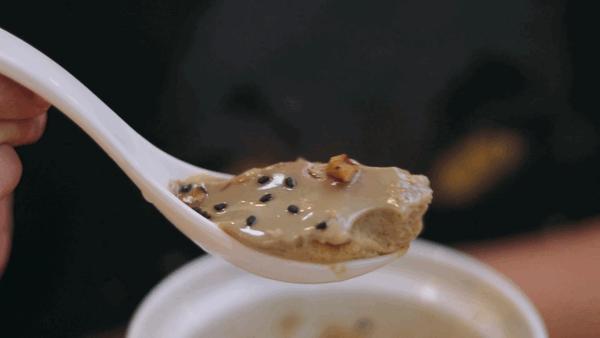
///
Before I set off, I have been thinking about how the poets who went south along the Beijing-Hangzhou Grand Canal had appreciated the scenery of Jianhu Lake, which was “ascent in the mountains, like swimming in a mirror”, and then relayed by the Cao’e River to the depths of the scenic landscape.
What kind of magic does the landscape that makes so many poets come together?

The beautiful scenery along the way also verified my imagination of the beauty of the Tang Poetry Road. This route is so worth it!
And the unexpectedly discovered wild scenic spots made me reconfirm the meaning of going out: good scenery is to be explored with both feet.
The road of Tang poetry hidden in the mist and rain in the south of the Yangtze River, once again press the head Amway for everyone~
/travel tips/
Accommodation : I will list the accommodations in several counties along the Tang Poetry Road. You can see where to stay in the itinerary.
- There are not many hotels in Shengzhou. There are Shengzhou Hotel and Shengzhou Baixing Super Hotel in the city center. The chain brands include Zhongxiang Radisson Hot Spring Resort Hotel, Atour, and Kaiyuan Mingting. The calendar room is about 200+/night, and the cost performance is relatively high.
- Xinchang accommodation options will be more abundant, brand hotels include Courtyard, local brands recommend Xinchang Zun Blue Mountain Residence and Baiyun Villa.
- The choice of rooftop hotels is also good, Tiantai Mountain Jiazhu is the most popular, He Hotel and Lujing Tiantai are also good, close to Guoqing Temple and waterfalls. If you pursue cost-effectiveness, you can consider the Rooftop Hotel. The hotel is relatively old as a whole, and Building 5 is recommended.
- Linhai hotel can consider the Linhai Yuanzhou International Hotel in the city center, the quality is better, there is an Atour nearby, the location is also very good.
Source: Zhihu www.zhihu.com
Author: Xiyoujun
[Zhihu Daily] The choice of tens of millions of users, to be a big cow to share new things in the circle of friends.
click to download
There are 9 more answers to this question, see all.
Further reading:
What are the best places for two people to drive back and forth in the same day around Hangzhou?
Is there any place suitable for weekend trips around Hangzhou by car?
This article is reproduced from: http://www.zhihu.com/question/371774019/answer/2528081615?utm_campaign=rss&utm_medium=rss&utm_source=rss&utm_content=title
This site is for inclusion only, and the copyright belongs to the original author.